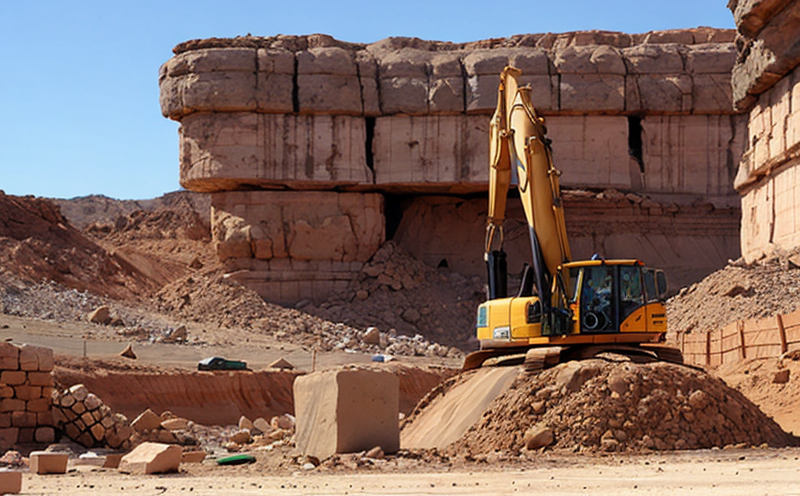ASTM D2664 Triaxial Compression Strength of Rock Testing
The ASTM D2664 Triaxial Compression Strength of Rock Testing is a critical process used in the mining sector to determine the resistance of rock specimens under uniaxial and triaxial compression conditions. This testing method evaluates how rocks behave under stress, which is essential for understanding the stability of mine shafts, tunnels, and underground structures.
The primary purpose of this test is to assess the in-situ strength parameters that can influence mining operations. The test helps in predicting rock failure modes during excavation processes and ensures that the designed support systems are adequate for the expected stresses. By conducting ASTM D2664 tests, engineers and geotechnical experts gain insights into the mechanical properties of rocks, including cohesion and friction angle under various loading conditions.
The test involves placing a cylindrical rock specimen in a triaxial testing machine that simulates the surrounding pressure (confined stress) and axial load applied to the rock. The apparatus used for this test is equipped with precise sensors that monitor deformation and strain. The test parameters are carefully controlled, ensuring accurate and repeatable results.
The ASTM D2664 triaxial compression strength testing is particularly useful in mining engineering as it provides data on the rock mass's ability to withstand stress without failure. This information is crucial for designing safe mining structures and planning excavation methods that minimize risks associated with rock instability.
The test results are reported based on standard procedures outlined in ASTM D2664, which includes the maximum triaxial compressive strength (σmax) of the specimen. Understanding these parameters is vital for predicting potential failure modes and ensuring compliance with safety standards in mining operations.
In summary, the ASTM D2664 test plays a pivotal role in geotechnical engineering by providing essential data on rock behavior under stress conditions. This information supports informed decision-making in the design of mine structures, tunneling projects, and other underground facilities.
Benefits
- Predictive Capability: Provides accurate predictions regarding the stability of rock masses during mining operations.
- Safety Assurance: Ensures that support structures are adequate to withstand expected stresses, reducing risks associated with rock failure.
- Design Optimization: Offers detailed insights into rock properties, enabling engineers to optimize structural designs for safety and efficiency.
- Compliance Verification: Ensures compliance with international standards like ASTM D2664, enhancing credibility in the mining sector.
The test results are essential inputs for various aspects of mine planning and design. By using ASTM D2664 triaxial compression strength data, engineers can make informed decisions that enhance safety and operational efficiency.
Quality and Reliability Assurance
- Precision in Measurement: The use of advanced testing equipment ensures precise measurement of rock strength, providing reliable data for decision-making.
- Repeatability: ASTM D2664 tests are repeatable, ensuring consistent results across multiple trials. This consistency builds confidence in the test outcomes.
- Standardized Procedures: Adherence to ASTM standards guarantees that the testing process is consistent and follows best practices, leading to accurate interpretations of rock properties.
The reliability of the test results is further enhanced by regular calibration of equipment and training of personnel. This ensures that all tests conducted are up-to-date with current industry standards. The focus on quality control and adherence to ASTM D2664 specifications ensures that the outcomes are trustworthy, which is critical for mining operations.
Customer Impact and Satisfaction
The results of the ASTM D2664 triaxial compression strength tests have a direct impact on the safety and efficiency of mining projects. By providing accurate data on rock stability, these tests support customer satisfaction by ensuring that all structural designs meet or exceed safety standards.
Customers in the mining sector rely on the detailed reports generated from this testing to make informed decisions about excavation methods, support systems, and other critical aspects of their operations. The ability to predict potential failure modes accurately contributes to a safer working environment for miners and other personnel involved in underground activities.
The data provided by ASTM D2664 tests also helps customers comply with regulatory requirements, further enhancing their reputation and operational success. Overall, the reliability and accuracy of these test results contribute significantly to customer satisfaction and trust in the laboratory's services.





